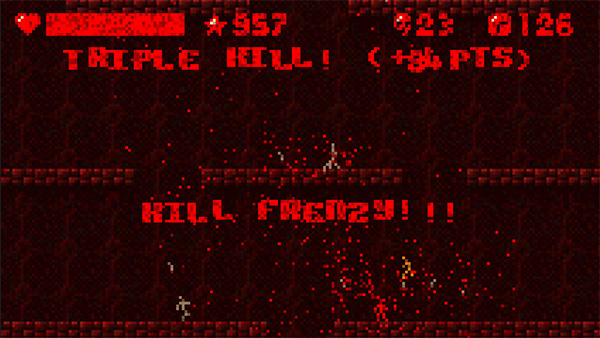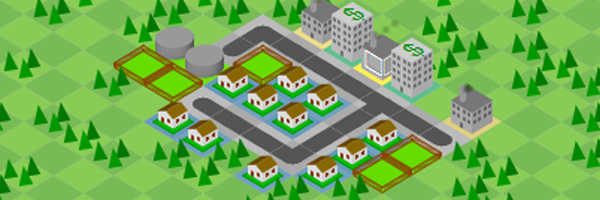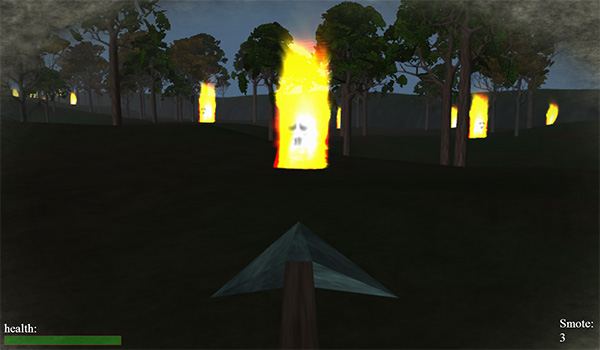js13k was a competition in which developers had to create the best game they possibly could using JavaScript and no more than 13KB in the process. All code and all assets should fit into that tiny space limitation. Although the competition ended a few weeks ago we wanted to showcase a selection of the winners here. Not only because they’re incredible feats of coding in just 13KB but also because they’re damn fun games in their own right. Truly creative JavaScript at its heavily optimised best.
First place went to SpacePi by Jack Rugile. Your task is to defend the orb in the middle of the screen. What look like the incoming missiles from Missile Command fly towards the center and you can draw a defensive wall to deflect the incoming shots. You only have a certain amount of power with which to draw the wall, but it rebuilds itself over time. So the trick is to draw carefully – small short walls, just in the right place to deflect one or more missiles, leaving you just enough time for the power to replenish so you can draw another! If you last long enough your orb fully expands and you complete the game. Each level awards you with money that you can spend on updates. The fact there are beautiful explosion effects, a great upgrade structure and 13 levels to play make the fact all of this fits into just 13 KB even more impressive.

The Sucker by Pordesign came second place and involves everyones favourite game staple – zombies. The objective is simply to kill everything. You can grab the people that wander aimlessly around, suck blood from them, throw them or just smash them into the levels causing a massive shower of blood to erupt. Graphically it’s lovely, all pixel art and nicely animated and there are even sound effects carrying the action along. There doesn’t seem to be as much depth of strategy to The Sucker as some of the other games in the contest, but it’s still remarkably fun to play.
Third place went to Mindless by Chandler Prall. You take on the role of a character stuck in a lab, dealing with the outbreak of an airborne virus. Mindless uses WebGL to present a 3D view of the action. The models are even animated, somewhat reminiscent of the classic game Alone in the Dark. As you explore the game you will encounter thugs, scientists, civilians and the infected. The story unfolds as you progress and it was great to see such a different sort of game attempted for this competition.

Simland by Aurium took 4th place and as you may be able to guess from its title, it is a homage to the classic city building game Sim City. You start off with a small town, just a few houses, one plot of farmland for food production and a few places to work. Using the tools menu (located in the top left of your browser window) you can paint different types of building onto the map. Draw roads to connect villages, create new houses and places for your people to work, and try to keep the right balance between industry, commerce and happy citizens. Personally I had great fun playing Simland and the attention to detail was excellent.
Continuing on the strategy theme 5th place went to 13 Tanks by Armen138. Dropped into a massive world map you have 13 tanks to control and an enemy to defeat. You can mine the land, building structures as you go, and set-up defensive turrets to try and stop the onslaught that the AI throws at you. There is a remarkable amount of depth to this game once you get over learning the control system (hint: F1 is your friend!).

The last game we’ll feature is Johnny Smither: 13th Knight by Paul Brunt. This is a WebGL tour-de-force. A 3D FPS game where you must protect the land from the evil fire creatures that are advancing all around. Using WASD to move and the mouse to look you charge around the forest, firing arrows at the fire creatures who die in a nice looking ball of purple plasma. Special mention must be given to the trees, textures and landscapes which were probably all procedurally generated when the game starts. Although it doesn’t have much depth to it compared to some of the other winners it’s still a shining example of what 13KB and a WebGL capable browser can do.
There are of course lots more entries than just these 6 to look at. And the source code to all of them is up on github for everyone to learn from. A great contest that demonstrates that limitations truly can breed creativity.
